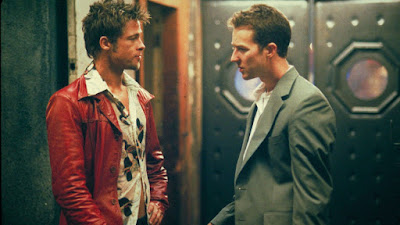The Stepford Wives (1975)
Everything about The Stepford Wives SCREAMS 70s and I am HERE for it. I absolutely love the aesthetic of the 70s -- long hair, bell-bottoms, and plenty of #FreeTheNipple -- so naturally, I loved this movie from the get-go. In the movie, Joanna is a free-spirited woman in the big city, but her husband seems ready to settle down in the ‘burbs with their two children. Joanna, quite reluctantly (and maybe somewhat against her will?), agrees, and the family moves to the quiet town of Stepford. In Stepford, Joanna almost immediately picks up on the weird energy surrounding the wives of Stepford and their husbands. When her husband is asked to join a “Men’s Association”, Joanna understandably finds this off-putting, and seeks to establish a women’s group along with her equally sexually-liberated partner-in-crime, Bobbie. These two women are artistic, sharp-tongued, and unashamed to be themselves. In contrast, the women of Stepford seem to be too caught up in their chores and tending to their husbands to take any interest in feminism. In fact, all of the women are so alike -- they’re all like walking mannequins or TV advertisements -- that Bobbie and Joanna become sure that something is just not right. They investigate further and become convinced that there must be something in the water that turns women into subservient house-maids. Bobbie and Joanna agree that they have to escape Stepford, but before they can, Bobbie falls victim to whatever it is in Stepford that strips women of their individuality, and becomes one of the “wives”. Joanna panics and tries to grab her children and flee, but is captured by the “Men’s Association” and introduced to her doppelganger -- a version of herself with huge breasts and completely black eyes. In the end, “Joanna” becomes a “wife”, making small-talk at the grocery store with all of the other clones. The Stepford Wives is an amazing movie that is just the right amount of off-putting and creepy. I love how the movie explores the topic of gender-roles and sexual freedom at the height of the sexual revolution. In the 70s, women were just beginning to break free from many of the restraints associated with their gender -- the idea of reverting back to a time when women were confined to the household would have been terrifying for any independent 70s woman. The 70s were a time for individual expression for women, rather than identifying with traditional “feminine” characteristics -- i.e. domesticity and superficiality. Everything became less about gender and more about the individual. Joanna’s character is a perfect representation of this. Her style of dress is much more androgynous and scandalous than the women of Stepford, and she has hobbies and interests that make her a dynamic, multi-faceted character. The wives of Stepford, however, are all conformed to this one single image of the ideal woman -- they are all like a caricature of the stereotypical housewife. In this way, all of the wives of Stepford are doppelgangers of each other, with no one woman having any defining characteristics that makes her a real person. In the end, Joanna’s doppelganger of herself is much like the other doppelgangers of Stepford -- beautiful, sexual, and completely void of personality.



Comments
Post a Comment